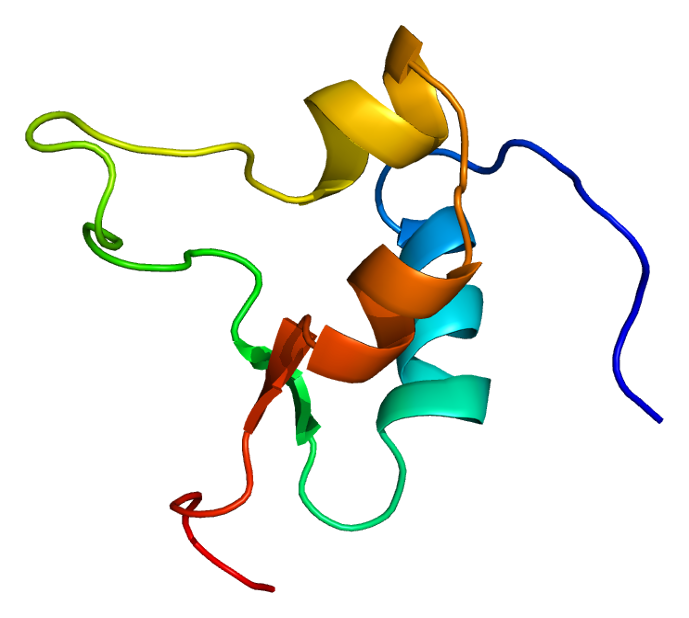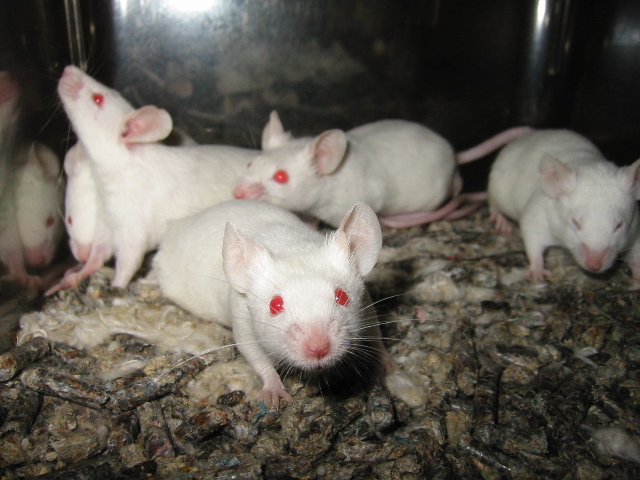When we last left off, a lab had accidentally mated two mice that had been exposed to harmful chemicals in the womb. (Quick note! In last week’s post, I incorrectly called these two mice siblings—they weren’t! Sorry! They were unrelated mice born to different parents that were part of this experiment, so both were exposed to the chemical in utero. Phew. Incestuous crisis avoided.) The male of the pair had a low sperm count and somewhat malformed reproductive system, but he (clearly) wasn’t entirely infertile. (These are mice after all! Even if the male’s fitness had been reduced by half—I'm totally making that figure up—he was still capable of passing on their genes to quite a few offspring.) Out of curiosity, and perhaps with an understanding that some great scientific discoveries were made entirely by accident, the head investigator, Michael Skinner, asked his colleagues to give the progeny of this accidental pairing a good once-over. To everyone’s surprise, almost all of the males (about 90%) exhibited the same low sperm count and malformed reproductive systems as their fathers despite having never been exposed to the chemicals that induced the mutations in the father.
Are you still with me? Maybe we should give these mice totally arbitrary names to make it clearer. Mother mouse A, let’s call her Susan, was exposed to some nasty chemicals when she was pregnant. All of her male babies ended up with low sperm counts and diminished reproductive structures. One of these guys, let’s call him Jack, was then accidentally mated to a female mouse born to different parents, but also part  of these experiments. Let’s call her Jill. What the scientists discovered was that when Jack and Jill were mated, all of their male offspring had low sperm counts and diminished reproductive structures—just like Jack. But Jack’s ailments were brought on by toxins he was exposed to when his mother was injected with chemicals. This would be like a pregnant women who worked in a coal mine eventually having a grandson with black lung disease. It just didn’t make any sense to the researchers and it seemed to go against everything they understood about how traits are controlled and passed from parent to offspring. In short: the scientists were, I’m sure, psyched.
of these experiments. Let’s call her Jill. What the scientists discovered was that when Jack and Jill were mated, all of their male offspring had low sperm counts and diminished reproductive structures—just like Jack. But Jack’s ailments were brought on by toxins he was exposed to when his mother was injected with chemicals. This would be like a pregnant women who worked in a coal mine eventually having a grandson with black lung disease. It just didn’t make any sense to the researchers and it seemed to go against everything they understood about how traits are controlled and passed from parent to offspring. In short: the scientists were, I’m sure, psyched.
As I explained last week, mechanisms for controlling gene expression have been known for a long time. Methylation (and acetylation, and a few others, but I’m going to generalize to just methylation) markers are added and taken away constantly to control the flow of protein production in an individual organism. It’s these epigenetic modifications that prevent your skin cells from secreting liver enzymes, or (gross image alert!) your stomach cells from sprouting hair. In an individual all kinds of things, including environmental stressors and chemicals, can cause so-called epimutations (abnormal epigenetic modifications) that affect the expression of proteins and therefore traits. Every time a cell with an epimutation replicates, the markers come along for the ride. In this way, epimutations can have lasting and serious consequences for an individual. But until Jack & Jill came around, the prevailing understanding was that that following fertilization any markers that had accumulated in the mother and father’s gametes were reset—wiped clean in two massive waves of epigenetic reprogramming, one right after fertilization and a second when the developing embryo’s primordial germ cells form. In this way, the epigenetic baggage of mom and dad do not affect the gene expression of offspring.
And if you think about it, this has to be largely true. A male sperm cell, for example, only expresses the proteins that help it be an effective sperm, but the DNA in that sperm ends up in every cell of a developing embryo. Copies of this original set of chromosomes eventually make their way into skin cells, liver cells, muscle cells, fat cells, and so on of the offspring. If the DNA markers in the father’s sperm weren’t reset, that kind of cell differentiation wouldn’t be possible because the only thing that the sperm cell could make would be more sperm cells.
That’s not to say that some of these epigenetic markers aren’t reestablished very quickly after fertilization. The normal, ho-hum epigenetic systems that modify gene expression are themselves coded for in DNA and start to work right away. For  example, there is a gene called insulinlike growth factor 2, or IGF2, that does all kinds of important things in development. Every fertilized egg has two copies of IGF2, one from each parent, but right after fertilization, a developmental cue shuts down the mother’s copy by methylation. If this epigenetic system fails, and both genes are left open for expression, some serious problems can result. The IGF2 system is evidence not only for the inheritance of epigenetic systems, but of the idea that epigenetic markers are (mostly) wiped clean upon fertilization because although the copy of the IGF2 allele the son inherits from his mother gets shut down very early in development—when that son becomes a man and starts to produce sperm cells (half of which will contain the IGF2 allele from his father, and half will contain that from his mother), those epigenetic marks are removed from mom’s allele, so that every sperm will contain an unmethylated, open-for-business version of IGF2. Cool, right?
example, there is a gene called insulinlike growth factor 2, or IGF2, that does all kinds of important things in development. Every fertilized egg has two copies of IGF2, one from each parent, but right after fertilization, a developmental cue shuts down the mother’s copy by methylation. If this epigenetic system fails, and both genes are left open for expression, some serious problems can result. The IGF2 system is evidence not only for the inheritance of epigenetic systems, but of the idea that epigenetic markers are (mostly) wiped clean upon fertilization because although the copy of the IGF2 allele the son inherits from his mother gets shut down very early in development—when that son becomes a man and starts to produce sperm cells (half of which will contain the IGF2 allele from his father, and half will contain that from his mother), those epigenetic marks are removed from mom’s allele, so that every sperm will contain an unmethylated, open-for-business version of IGF2. Cool, right?
So what the heck was happening in Michael Skinner’s mice? How was it that the epimutations present in the father mouse were being passed on to his sons? Why weren’t they reset after fertilization? The first thing the scientists checked, and with good reason, was whether there were trace amounts of the pesticide or fungicide in  the sons that had originally triggered the epimutations in dad. There weren’t. Next, they looked at overall rates of mutation—maybe some other environmental factor was triggering mutations in the offspring. No dice. So then what? Well, then the scientists had to conclude that somehow, the epimutations that affected gonad development in the original male mice in generation two had evaded the reset process and persisted to the third generation. And, as it turned out, they persisted into the fourth and then fifth generation of mice, too.
the sons that had originally triggered the epimutations in dad. There weren’t. Next, they looked at overall rates of mutation—maybe some other environmental factor was triggering mutations in the offspring. No dice. So then what? Well, then the scientists had to conclude that somehow, the epimutations that affected gonad development in the original male mice in generation two had evaded the reset process and persisted to the third generation. And, as it turned out, they persisted into the fourth and then fifth generation of mice, too.
The results were published in 2005 in Science and set off a maelstrom that has continued to today as more and more evidence in support of these occasionally persistent epimutations—even in humans.
Long live Lamarck, they proclaimed! After all, Lamarck is best-known for his inheritance of acquired characteristics idea, and here we had a characteristic that was indeed acquired being passed from parent to child. Darwin is dead, they cried! Since if Lamarck was right, Darwin must be wrong. HUH?, we all wondered.
So, is Darwin dead (I mean figuratively, of course, since he’s obviously actually dead)?
The short answer: no.
Long answer…coming next week.

